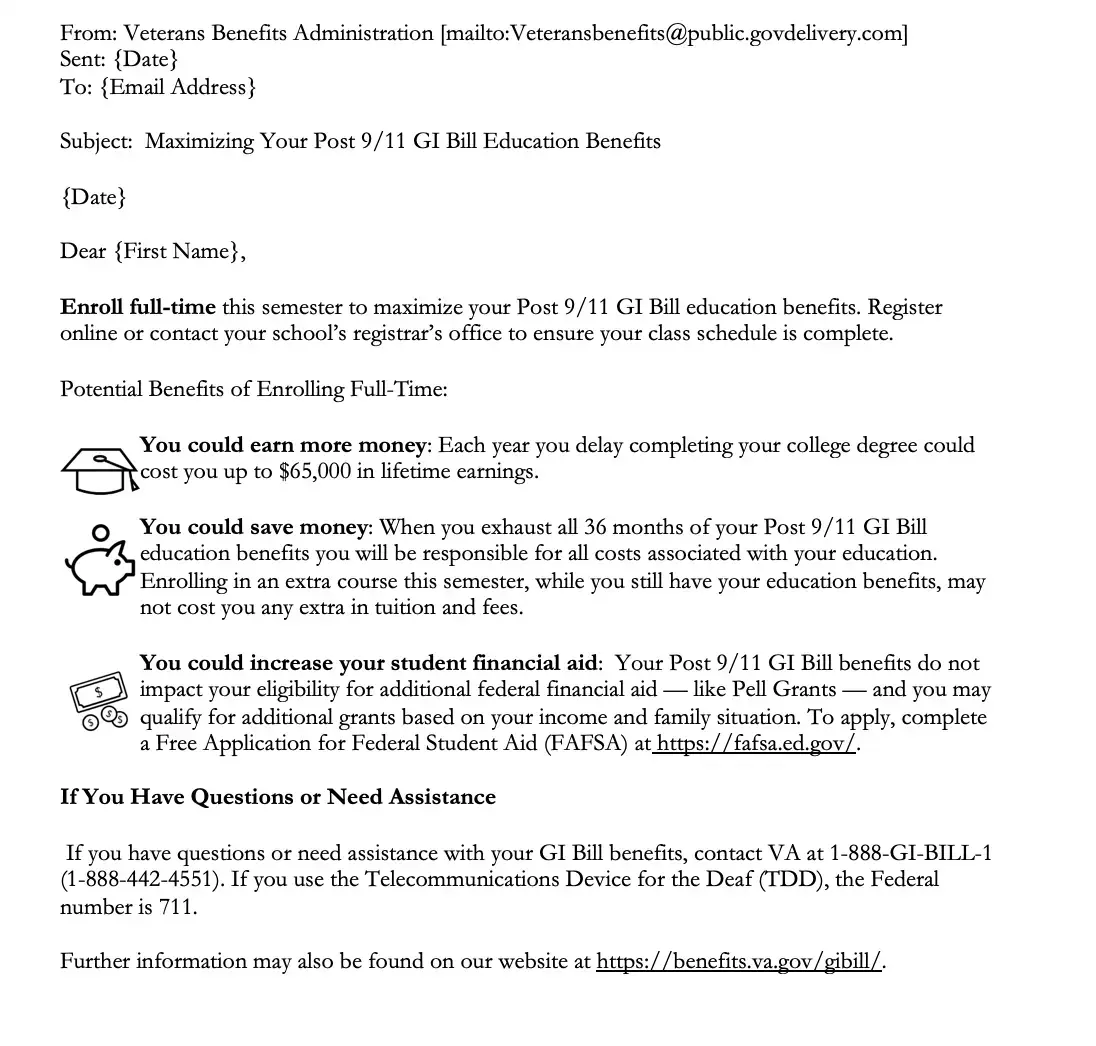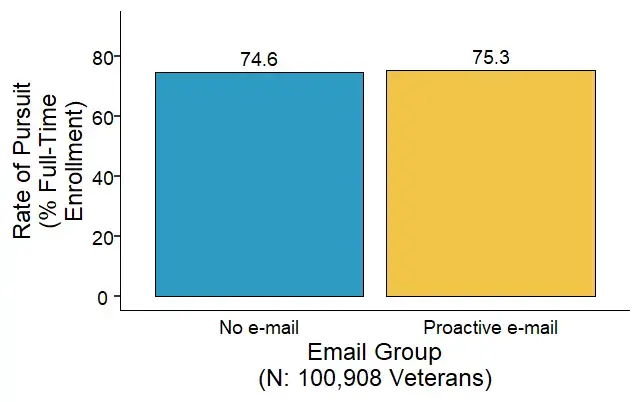Using evidence to leverage proactive no-cost communications for an immediate positive impact for Veterans
OES and the Veterans Benefits Administration in the Department of Veterans Affairs developed and tested a proactive communication to increase college enrollment for Post-9/11 GI Bill beneficiaries. This communication encouraged beneficiaries to enroll full-time and increase their enrollment intensity. It also provided information on accessing financial aid, and connected delays in degree completion with potential monetary impacts.

“The VA continually looks for ways to improve our services to Veterans and help them use the benefits they have earned. We were excited to work with the Office of Evaluation Services to assess opportunities to improve Veteran outcomes through low-cost, evidence building activities. This initiative showed that getting timely information into Veterans hands can lead up to 3% of students to increase their enrollment, improving the chances they will complete their program before exhausting their GI Bill benefits.” - Lucas Tickner, Education Service, Department of Veterans Affairs
Random assignment was used to place 100,908 actively enrolled degree-seeking, part-time, and non-active duty Post-9/11 GI Bill beneficiaries into one of two conditions. They either received no proactive communication or a proactive email encouraging increased enrollment intensity.
The results suggest that there was a small and statistically significant increase in the number of courses enrolled students who received the email took in the next semester, but no significant difference in their likelihood being enrolled full-time . Specifically, the proportion of full-time enrollment among those receiving the proactive email was 0.753, compared to 0.746 for those who did not. **The difference represents a 1% increase in relative enrollment. **

Table 1: Proactive Communication Significantly Increases College Enrollment for Post-9/11 GI Bill Beneficiaries
In less than a year, this project demonstrated that a low-cost intervention could result in a meaningful change in Veterans’ school enrollment. In addition, it provided information about potential adjustments to make to the intervention for future efforts. The Veterans Benefits Administration is still working through how to directly apply the results of this evaluation. Nonetheless, the process of working with OES allowed them to identify additional ways to use administrative data and leverage proactive communication in a way that had an immediate, positive impact on Post-9/11 GI Bill beneficiaries in their educational pursuits.
This project was presented at the 2019 Annual Event. See the recording and presentation slides here.
